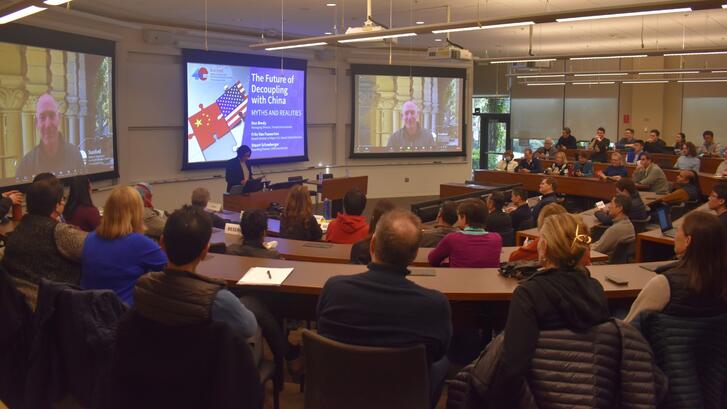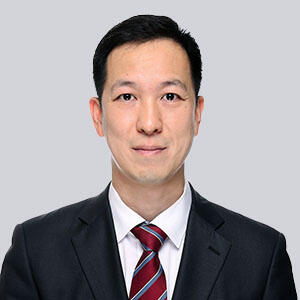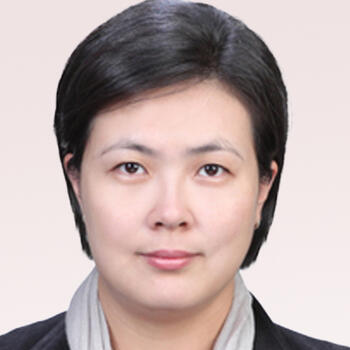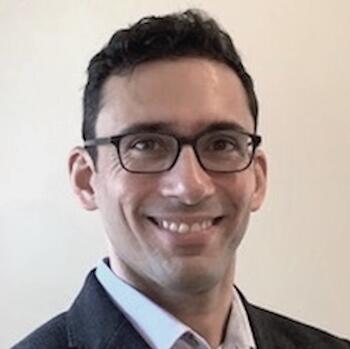I once had the opportunity to speak to Indian engineers who work in Korea. They told me that while they enjoyed working for Korean companies such as Samsung or SK, prejudice among Koreans toward India often made life difficult.[23] Building closer ties with India is a foreign policy imperative under the Yoon administration’s Indo-Pacific Strategy, but high-level policies alone will not be enough. It is vital for civil society to enhance mutual understanding between Korea and India by expanding cultural exchanges and strengthening people-to-people ties. The private sector also has an important role to play, as they can augment efforts by government-run Korean cultural centers and public entities such as the Korea Foundation.[24]
Indian talent could play an important role in Korea’s economic future. Korea will soon face significant labor shortages due to “a crisis on three fronts: a plummeting birth rate, an aging population, and a serious brain drain.”[25]On the other hand, India has a relatively young population and a large, highly skilled workforce. According to one estimate, “India is projected to have a skilled-labour surplus of around 245.3 million workers by 2030.”[26] There is also a natural synergy between the two economies. India excels in software, whereas Korea’s strength lies in hardware. If China provided opportunities for Korean manufacturers to export intermediate goods, India could provide the talent that Korea’s economy will increasingly rely on in the coming years.
Cowen argues that “India is by far the world’s most significant source of undiscovered and undervalued talent.” Anyone who is concerned about “the future of their own nation” in today’s world, he adds, “really should be focusing on India.”[27] Korea would do well to heed his advice.
While seeking ways to strengthen cooperation with India, Korea should also strive to build closer ties with the Indian diaspora and its networks. East Asian countries, including Korea, adopted a state-centered model of economic development. India took a different path, and its overseas diaspora has played a unique role in driving India’s economic growth. The ever-increasing influence of India’s new argonauts extends beyond Silicon Valley. Australia and Germany have sought to attract Indian talents and draw on their professional networks. The same goes for countries in the Middle East, including the United Arab Emirates. Korea could form closer partnerships with the extensive global networks of India’s diaspora community as it seeks to attract Indian talent and pursue new economic opportunities.
During the Cold War, Korea looked east toward the United States and Japan. As the Iron Curtain fell in the 1980s, Korea pursued Nordpolitik by normalizing ties with Moscow and Beijing. It is now time for Korea to look south. Even as Southeast Asia grows in importance, Korea must keep its eyes fixed on India. If Korea aims to become Asia’s small giant in this turbulent era, it would be wise for Seoul to use prevailing geopolitical currents to its favor.
[1]This essay draws on ongoing research by the author, which will be published in an upcoming book tentatively titled Talent Giants in the Asia-Pacific Century: A Comparative Analysis of Japan, Australia, China, and India.
[2] Amy Adams and Anneke Cole, “Stanford Doerr School of Sustainability, University’s First New School in 70 Years, Will Accelerate Solutions to Global Climate Crisis,” Stanford University, May 4, 2022, https://news.stanford.edu/2022/05/04/stanford-doerr-school-sustainability-universitys-first-new-school-70-years-will-accelerate-solutions-global-climate-crisis/.
[3] Republic of Korea Ministry of Foreign Affairs, Strategy for a Free, Peaceful, and Prosperous Indo-Pacific Region, December 28, 2022, 17, https://www.mofa.go.kr/eng/brd/m_5676/view.do?seq=322133.
[4] The terms “sea turtle” (海龟) and “return from overseas” (海归) are homophones for each other.
[5] Anthony Capaccio, “U.S. Faces ‘Unprecedented Threat’ from China on Tech Takeover,” Bloomberg, June 22, 2018, https://www.bloomberg.com/news/articles/2018-06-22/china-s-thousand-talents-called-key-in-seizing-u-s-expertise.
[6] S. P. Sukhatme and I. Mahadevan, Pilot Study on Magnitude and Nature of the Brain-Drain of Graduates of the Indian Institute of Technology, Bombay (Bombay: Indian Institute of Technology, 1987).
[7] Neil G. Ruiz and Abby Budiman, “Number of Foreign College Students Staying and Working in U.S. After Graduation Surges,” Pew Research Center, May 10, 2018, https://www.pewresearch.org/global/2018/05/10/number-of-foreign-college-students-staying-and-working-in-u-s-after-graduation-surges/.
[8] Lubna Kably, “Indians Bagged 3.01 Lakh H-1B Visas During Fiscal 2021–74% of the Total,” Times of India, April 14, 2022, https://timesofindia.indiatimes.com/world/us/indians-bagged-3-01-lakh-h-1b-visas-during-fiscal-2021-74-of-the-total/articleshow/90845244.cms.
[9] Indian Tech Start-Up Ecosystem: Approaching Escape Velocity (Noida: NASSCOM-Zinnov, 2018), 6; Manish Singh, “Indian Tech Startups Raised a Record$14.5B in 2019,” TechCrunch, December 30, 2019, https://techcrunch.com/2019/12/29/indian-tech-startups-funding-amount-2019/.
[10] “HNIs to Invest $30 Billion in Indian Tech Startups By 2025: Report,” Economic Times, June 17, 2021, https://economictimes.indiatimes.com/tech/startups/hnis-to-invest-30-billion-in-indian-tech-startups-by-2025-report/articleshow/83607846.cms.
[11] “Narendra Modi’s Speech at the Shark Tank, Silicon Valley As It Happened,” Wall Street Journal, September 27, 2015, https://www.wsj.com/articles/BL-IRTB-30506.
[12] Chidanand Rajghatta, “Silicon Valley Stars Sign on to PM Modi’s ‘Digital India’ Vision,” Times of India, September 27, 2015, https://timesofindia.indiatimes.com/tech-news/silicon-valley-stars-sign-on-to-pm-modis-digital-india-vision/articleshow/49129060.cms.
[13] Vivek Wadhwa, AnnaLee Saxenian, and F. Daniel Siciliano, Then and Now: America’s New Immigrant Entrepreneurs, Part VII (Ewing Marion Kauffman Foundation, 2012), 3, https://www.kauffman.org/wp-content/uploads/2019/12/Then_and_now_americas_new_immigrant_entrepreneurs.pdf.
[14] Nikhil Inamdar and Aparna Alluri, “Parag Agrawal: Why Indian-born CEOs dominate Silicon Valley,” BBC News, December 4, 2021, https://www.bbc.com/news/world-asia-india-59457015.
[15] Jens Manuel Krogstad and Jynnah Radford, “Education Levels of U.S. Immigrants Are on the Rise,” Pew Research Center, September 14, 2018, https://www.pewresearch.org/fact-tank/2018/09/14/education-levels-of-u-s-immigrants-are-on-the-rise/.
[16] United States Census Bureau, “Census Bureau Releases New Education Attainment Data,” February 24, 2022, https://www.census.gov/newsroom/press-releases/2022/educational-attainment.html.
[17] U.S. Department of Homeland Security, 2020 Yearbook of Immigration Statistics (Washington, D.C.: U.S. Department of Homeland Security, Office of Immigration Statistics, 2022), 53–54, https://www.dhs.gov/immigration-statistics/yearbook/2020.
[18] “With $87 Billion, India Top Remittance Recipient in 2021: UN Report,” Economic Times, July 20, 2022, https://economictimes.indiatimes.com/nri/invest/with-87-billion-india-top-remittance-recipient-in-2021-un-report/articleshow/93012012.cms.
[19] Gi-Wook Shin, “Walking a Tightrope,” Shorenstein APARC, November 16, 2022, https://aparc.fsi.stanford.edu/korea/news/walking-tightrope.
[20] Tyler Cowen, “Rishi Sunak Shows the Growing Influence of Indian Talent in the West,” Bloomberg, October 28, 2022, https://www.bloomberg.com/opinion/articles/2022-10-28/rishi-sunak-shows-growing-influence-of-indian-talent-in-west.
[21] Ock Hyun-ju, “Itaewon Bar Accused of Discriminating Against Indian,” Korean Herald, June 7, 2017, https://www.koreaherald.com/view.php?ud=20170607000796.
[22] Park Si-soo, “Indian Accuses Korean of Racial Discrimination,” Korea Times, August 3, 2009, http://www.koreatimes.co.kr/www/news/nation/2009/08/117_49537.html; Paul Kerry and Matthew Lamers, “Setting a Precedent on Racism,” Korea Herald, March 30, 2010, https://www.koreaherald.com/view.php?ud=20091106000044.
[23] Gi-Wook Shin and Joon Nak Choi, Global Talent: Skilled Labor as Social Capital in Korea (Stanford University Press, 2015).
[24] For more information about the Korea Foundation, see the organization’s “About Us” page at https://www.kf.or.kr/kfEng/cm/cntnts/cntntsView2.do?mi=2126.
[25] Gi-Wook Shin, “Demographic Headwinds,” Shorenstein APARC, December 15, 2022, https://aparc.fsi.stanford.edu/news/demographic-headwinds.
[26] “India to Have Talent Surplus of 245 Million Workers by 2030: Study,” Economic Times, May 7, 2018, https://economictimes.indiatimes.com/news/economy/indicators/india-to-have-talent-surplus-of-245-million-workers-by-2030-study/articleshow/64064096.cms.
[27] Cowen, “Rishi Sunak Shows the Growing Influence of Indian Talent in the West.”














 Jenny Jun is a PhD Candidate in the Department of Political Science at Columbia University and Nonresident Fellow at the Atlantic Council’s Cyber Statecraft Initiative. Her current research explores the dynamics of coercion in cyberspace. Her broader interests include cyber conflict, North Korea, and security issues in East Asia. Jenny is a co-author of the 2015 Center for Strategic and International Studies (CSIS) report North Korea’s Cyber Operations: Strategy and Responses, published by Rowman & Littlefield. She has presented her work on North Korea’s cyber operations at various panels and has provided multiple government briefings and media interviews on the topic. She received her MA and BS each from the Security Studies Program (SSP) and the School of Foreign Service (SFS) at Georgetown University.
Jenny Jun is a PhD Candidate in the Department of Political Science at Columbia University and Nonresident Fellow at the Atlantic Council’s Cyber Statecraft Initiative. Her current research explores the dynamics of coercion in cyberspace. Her broader interests include cyber conflict, North Korea, and security issues in East Asia. Jenny is a co-author of the 2015 Center for Strategic and International Studies (CSIS) report North Korea’s Cyber Operations: Strategy and Responses, published by Rowman & Littlefield. She has presented her work on North Korea’s cyber operations at various panels and has provided multiple government briefings and media interviews on the topic. She received her MA and BS each from the Security Studies Program (SSP) and the School of Foreign Service (SFS) at Georgetown University.





 Craig Allen began his tenure in Washington, DC, as the sixth President of the United States-China Business Council, a private, nonpartisan, nonprofit organization representing over 200 American companies doing business with China. Ambassador Allen began his government career in 1985 at the Department of Commerce’s International Trade Administration (ITA) where, from 1986 to 1988, he worked as an international economist in ITA’s China Office. In 1988, Allen transferred to the American Institute in Taiwan, where he served as Director of the American Trade Center in Taipei. He returned to the Department of Commerce for a three-year posting at the US Embassy in Beijing as Commercial Attaché in 1992. In 1995, Allen was assigned to the US Embassy in Tokyo where he was promoted to Deputy Senior Commercial Officer in 1998. Allen became a member of the Senior Foreign Service in 1999. Starting from 2000, he served a two-year tour at the National Center for APEC in Seattle where he worked on the APEC Summits in Brunei, China, and Mexico. In 2002, Allen first served as the Senior Commercial Officer in Beijing where he was later promoted to the Minister Counselor rank of the Senior Foreign Service. After a four-year tour in South Africa, Ambassador Allen became Deputy Assistant Secretary for Asia at the US Department of Commerce’s International Trade Administration. He later became Deputy Assistant Secretary for China. Ambassador Allen was sworn in as the United States ambassador to Brunei Darussalam on December 19, 2014 where he served until he transitioned to take up his position as President of the US-China Business Council.
Craig Allen began his tenure in Washington, DC, as the sixth President of the United States-China Business Council, a private, nonpartisan, nonprofit organization representing over 200 American companies doing business with China. Ambassador Allen began his government career in 1985 at the Department of Commerce’s International Trade Administration (ITA) where, from 1986 to 1988, he worked as an international economist in ITA’s China Office. In 1988, Allen transferred to the American Institute in Taiwan, where he served as Director of the American Trade Center in Taipei. He returned to the Department of Commerce for a three-year posting at the US Embassy in Beijing as Commercial Attaché in 1992. In 1995, Allen was assigned to the US Embassy in Tokyo where he was promoted to Deputy Senior Commercial Officer in 1998. Allen became a member of the Senior Foreign Service in 1999. Starting from 2000, he served a two-year tour at the National Center for APEC in Seattle where he worked on the APEC Summits in Brunei, China, and Mexico. In 2002, Allen first served as the Senior Commercial Officer in Beijing where he was later promoted to the Minister Counselor rank of the Senior Foreign Service. After a four-year tour in South Africa, Ambassador Allen became Deputy Assistant Secretary for Asia at the US Department of Commerce’s International Trade Administration. He later became Deputy Assistant Secretary for China. Ambassador Allen was sworn in as the United States ambassador to Brunei Darussalam on December 19, 2014 where he served until he transitioned to take up his position as President of the US-China Business Council.
 James Green has worked for over two decades on U.S.-Asia relations. For five years, Green was the Minister Counselor for Trade Affairs at the U.S. Embassy in Beijing (2013-2018). As the senior official in China from the Office of the United States Trade Representative (USTR), Green was deeply involved in all aspects of trade negotiations, trade enforcement, and in reducing market access barriers for American entities. In prior government service, Green worked on the Secretary of State’s Policy Planning Staff and at the State Department’s China Desk on bilateral affairs. He also served as the China Director of the White House’s National Security Council. In the private sector, Green was a senior vice president at the global strategy firm founded by former Secretary of State Madeleine Albright and was the founding government relations manager at the American Chamber of Commerce in Shanghai, Asia’s largest AmCham. Currently, Green is a Senior Research Fellow at Georgetown University's Initiative for U.S.-China Dialogue on Global Issues and hosts a U.S.-China Dialogue Podcast. He was most recently named as
James Green has worked for over two decades on U.S.-Asia relations. For five years, Green was the Minister Counselor for Trade Affairs at the U.S. Embassy in Beijing (2013-2018). As the senior official in China from the Office of the United States Trade Representative (USTR), Green was deeply involved in all aspects of trade negotiations, trade enforcement, and in reducing market access barriers for American entities. In prior government service, Green worked on the Secretary of State’s Policy Planning Staff and at the State Department’s China Desk on bilateral affairs. He also served as the China Director of the White House’s National Security Council. In the private sector, Green was a senior vice president at the global strategy firm founded by former Secretary of State Madeleine Albright and was the founding government relations manager at the American Chamber of Commerce in Shanghai, Asia’s largest AmCham. Currently, Green is a Senior Research Fellow at Georgetown University's Initiative for U.S.-China Dialogue on Global Issues and hosts a U.S.-China Dialogue Podcast. He was most recently named as 
